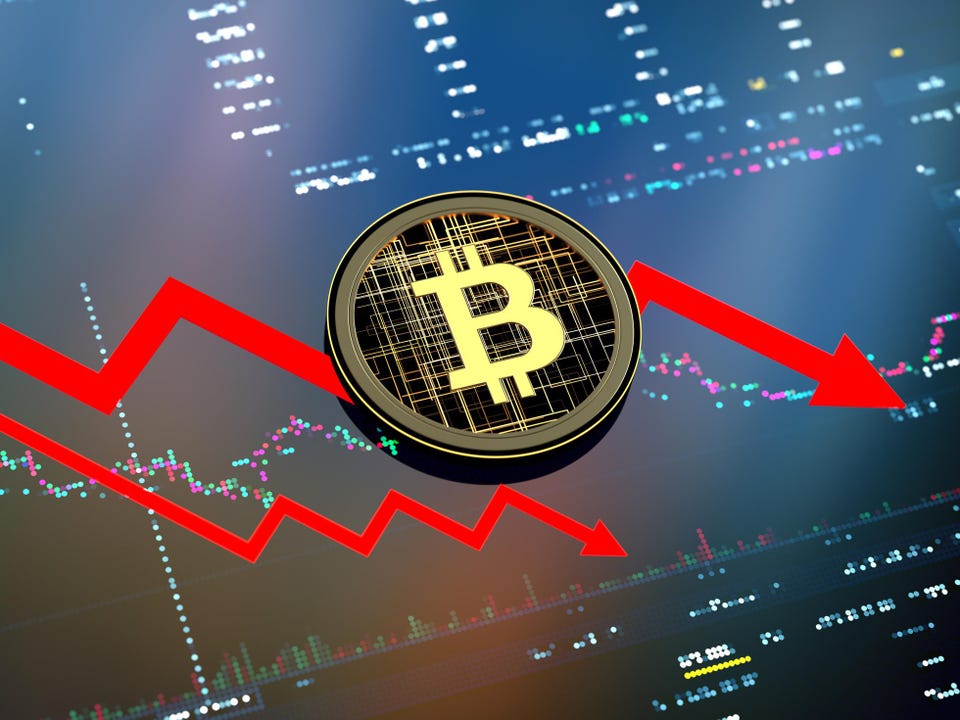
Times Up for Programmed Money
By MacKenzy Pierre
The estimated reading time for this post is 250 seconds
Times up for programmed money or cryptocurrency. It is supposed to provide investors a hedge against inflation, rising interest rates, and other market turmoils; however, the highly-speculative cryptocurrency market and its investors might need to use fiat currencies to hedge against their hedge.
The industry has been experiencing violent turbulences over the past few months. The precipitous crash of stablecoin Terra/Luna happened in May, Coinbase, one of the largest cryptocurrency exchanges, laid-off more than 18% of its workforce, and Cryptocurrency lending platform Celsius Network stopped its nearly 2 million customers from withdrawing their money and filed chapter 11 bankruptcy last week.
Stablecoins were supposed to be safe since they were pegged to the U.S. dollar.
The cryptocurrency market reached a fever point in the 4th quarter of 2021. One Bitcoin, the industry’s most well-known cryptocurrency, traded for $64,837.49 on November 11, 2021. It became a $3 trillion market.
As of this writing, bitcoin is trading at $21,974.80, and the crypto market’s valuation is hovering around $1tn. Both professional and amateur crypto investors are starting to panic and question their beliefs. After all, the current economic condition is supposed to solidify crypto as a haven for inflation-worried investors.
Retail and institutional crypto investors are flying to the U.S. dollar or other fiat currencies for safety. A move that signal that times might be up for bitcoin and other cryptocurrencies.
Bitcoin & Cryptocurrency’s Fundamentals
Cryptocurrency enthusiasts marketed bitcoin, which people can mine by solving cryptographic puzzles, as the ultimate hedge against loose fiscal and monetary policies.
They claimed that government printing money guarantees to cause skyrocketed inflation and the collapse of fiat currencies. And bitcoin, because of its scarcity and non-government involvement, would save the day.
According to a white paper published by its mysterious founder, Satoshi Nakamoto, the maximum bitcoin that can be mined is 21 million.
Governments across the globe spent trillions of dollars to combat the coronavirus pandemic and prevent their economies from going over a financial cliff. The United States of America alone spent more than 5 trillion dollars, which might be one of the primary causes of the country’s current inflationary environment.
Numerous economists believe that stagflation, the ugly marriage between high inflation and a recession, is the next step for the U.S. economy. All those bad economic news were supposed to be great for cryptocurrency investors.
In July 1944, Forty-four nations met and signed the Bretton Woods Agreement that established a system through which a fixed currency exchange rate could be created using gold as the universal standard.
Greenback holders could convert their money to a fixed amount of gold. The agreement also created the International Monetary Fund (IMF) and the World Bank.
President Nixon briefly suspended the dollar conversion to gold, which started a cascading effect. By 1973, all significant currencies had begun to float, meaning the forex market sets the currency through supply and demand.
Since the United States of America got off the so-called gold standard, politicians, financial leaders, and governmental bodies have advocated for its return. The people mentioned above believe that the government’s ability to print unlimited money would end hyperinflation and collapse the Benjamin.
The New Bretton Woods
The introduction of cryptocurrency Bitcoin, a decentralized currency beyond the reach of any government, gave the Bretton Woods Agreement and the Bretton Woods System advocates solace.
They were the first believers of the cryptocurrency religion and began to proselytize immediately. They gained both financial literate and illiterate followers, speculators, and scammers.
Even the global financial system started building infrastructure to move digital currencies. The city of Miami has its cryptocurrency dubbed “MiamiCoin,” and the country of El Salvador adopted it as its legal tender.
Since the collapse of the Bretton Woods System, The U.S. economy went through major recessions, including a great one in 2008. The government used fiscal and monetary policies to respond to recessions without any material and lasting effect on the U.S. dollar.
During the 2008 Great Recession and the 2020 pandemic-induced recession, the Federal Reserve used unprecedented monetary policies, including being the lender and buyer of last resort to prevent another Great Depression.
The buck is as strong as ever. The euro hit parity with the U.S. dollar for the first time since 2002.
The sixty-four-thousand-dollar question crypto investors need is if bitcoin is not the new Bretton Woods, where does its value lie?
Investing in bitcoin is not a hedge against high inflation and fiscal and monetary policies. The government’s ability to print unlimited money does not affect the dollar like crypto evangelists expect it to do.
Conclusion
Investing in bitcoin and other cryptocurrencies is supposed to hedge against high inflation and rising interest rates, but it has provided them with more economic pains.
The cryptocurrency market’s fundamentals, hedging against lax fiscal and monetary policies, have been tested and are false negative.
Crypto investors don’t have financial statements to review to make sense of their flawed fundamentals. the solution is for them to fly to fiat currencies or other tangible assets for safety
Senior Accounting & Finance Professional|Lifehacker|Amateur Oenophile
RELATED ARTICLES
Food Inflation vs. Holiday Menus: Feast Without the Financial Hangover
The estimated reading time for this post is 185 seconds You can feed a full house without making your card issuer fat and happy. The trick isn’t starving the table—it’s starving the waste. Why the Table Feels Pricier Every Year...
The Middle-Class Holiday Travel Playbook (Thanksgiving & December)
The estimated reading time for this post is 263 seconds Travel is where good budgets go to die. Prices spike, emotions run hot, and suddenly you’re financing nostalgia at 24% APR. This plan keeps the trip—and your balance—under control. Decide...
Leave Comment
Cancel reply

Food Inflation vs. Holiday Menus: Feast Without the Financial Hangover

The Middle-Class Holiday Travel Playbook (Thanksgiving & December)

How Much Do the Holidays Cost Middle-Class Americans?
Gig Economy
American Middle Class / Oct 27, 2025
Food Inflation vs. Holiday Menus: Feast Without the Financial Hangover
The estimated reading time for this post is 185 seconds You can feed a full house without making your card issuer fat and happy. The trick...
By Article Posted by Staff Contributor
American Middle Class / Oct 27, 2025
The Middle-Class Holiday Travel Playbook (Thanksgiving & December)
The estimated reading time for this post is 263 seconds Travel is where good budgets go to die. Prices spike, emotions run hot, and suddenly you’re...
By Article Posted by Staff Contributor
American Middle Class / Oct 26, 2025
How Much Do the Holidays Cost Middle-Class Americans?
The estimated reading time for this post is 274 seconds You already know the punchline: they cost more than we planned—financially and emotionally. Between Halloween, Thanksgiving,...
By Article Posted by Staff Contributor
American Middle Class / Oct 26, 2025
Black Friday & Cyber Monday: Deal or Theater?
The estimated reading time for this post is 221 seconds You don’t need more “doorbusters.” You need a plan that keeps you out of the interest...
By Article Posted by Staff Contributor
American Middle Class / Oct 26, 2025
Points, Buy-Downs, and Breakeven: Stop Lighting Money on Fire
The estimated reading time for this post is 402 seconds Reality Check: The Payment You Can Breathe With You don’t need another “rate hack.” You need...
By Article Posted by Staff Contributor
American Middle Class / Oct 26, 2025
Mortgage Recast: The Low-Cost Way to Shrink Your Payment Without Refinancing
The estimated reading time for this post is 597 seconds Reality Check You sold the old house but the new one closed first. Now you’re sitting...
By Article Posted by Staff Contributor
American Middle Class / Oct 24, 2025
🏠 The House That Built (and Broke) the Middle Class: How Much Home Should Americans Really Buy
The estimated reading time for this post is 418 seconds You can tell a lot about someone’s economic standing by their mortgage application. The size of...
By MacKenzy Pierre
American Middle Class / Oct 24, 2025
How to Fight Financial Fraud (Without Losing Your Sanity—or Your Savings)
The estimated reading time for this post is 561 seconds Reality Check You don’t wake up planning to get scammed. No one does. It starts with...
By Article Posted by Staff Contributor
American Middle Class / Oct 24, 2025
Property Tax Shock: How to Appeal Your Assessment (and Actually Win)
The estimated reading time for this post is 425 seconds If your property tax bill jumped like it found a pre-workout, don’t just grumble—appeal it. Assessments...
By Article Posted by Staff Contributor
American Middle Class / Oct 24, 2025
HELOC vs. Cash-Out Refi: Which One Actually Lowers Your Risk?
The estimated reading time for this post is 424 seconds The Fast Answer (Start Here) If your current first-mortgage rate is meaningfully lower than today’s, keep...
By Article Posted by Staff Contributor
Latest Reviews
American Middle Class / Oct 27, 2025
Food Inflation vs. Holiday Menus: Feast Without the Financial Hangover
The estimated reading time for this post is 185 seconds You can feed a full...
American Middle Class / Oct 27, 2025
The Middle-Class Holiday Travel Playbook (Thanksgiving & December)
The estimated reading time for this post is 263 seconds Travel is where good budgets...
American Middle Class / Oct 26, 2025
How Much Do the Holidays Cost Middle-Class Americans?
The estimated reading time for this post is 274 seconds You already know the punchline:...



